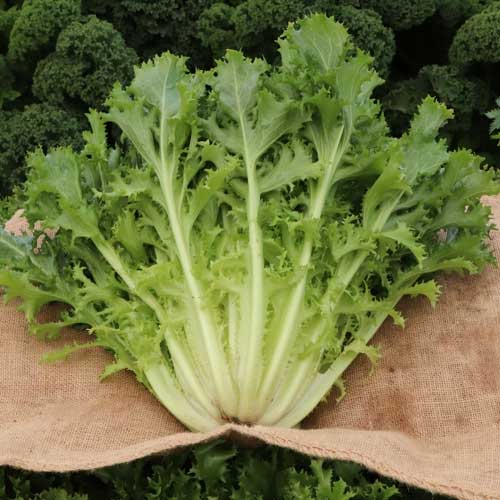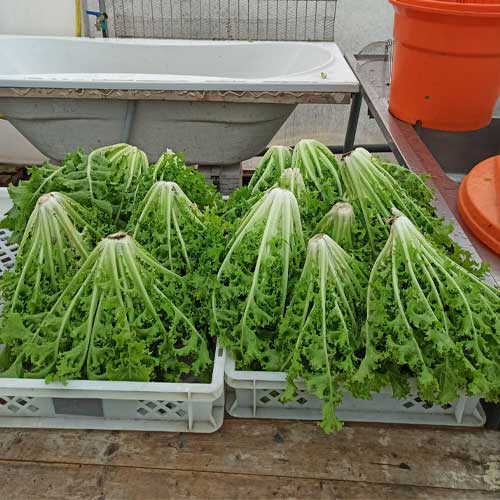Total Number of seeds: 200
Curly Endive Green Seeds produce compact plants with loosely packed, frilly dark green leaves and an off-white center. The leaves have a mild, slightly bitter taste and a crunchy texture, making them perfect for adding variety to salads or as a garnish for various dishes. Curly Endive is a popular salad green, known for its unique shape and slightly bitter flavor that pairs well with other leafy greens. This variety matures to form a compact head with crisp, tender leaves, making it an excellent addition to home gardens.


In India, Curly Endive Green Seeds should be sown in cooler months, typically from September to February, for best results. These plants thrive in mild weather and produce frilly, tender leaves that are perfect for fresh salads and garnishes.
1. Apply Nutrient-Rich Fertilizers
When your plants begin flowering, use nutrient-rich fertilizers like Organic Bone Meal Powder or Vermicompost. This helps in boosting the bloom and enhances overall yield.
2. Use Organic Fertilizers
Feed your plants with organic fertilizers such as Cow Dung Manure or Neem Cake. Organic options promote healthy soil life.
3. Regular Feeding
Apply fertilizers every 20-25 days to ensure plants receive a steady supply of nutrients. Choose from various options like Cocopeat Compost for moisture retention.
Curly Endive Green is known for its unique curly leaves that add texture and a mild, slightly bitter flavor to salads. This variety produces dark green leaves with a tender, off-white center that is highly prized in gourmet salads. The leaves are crisp and hold their shape well, making them ideal for fresh use or garnishing.
Curly Endive is rich in vitamins A and K, as well as fiber and antioxidants, making it a healthy addition to any diet. The leaves can be used fresh in salads, wraps, or sandwiches, or as a garnish for soups and main dishes. They are also perfect for adding texture and flavor to stir-fries or sautés.
When growing Curly Endive Green Seeds, ensure the soil is loose and well-draining. Water regularly to keep the soil moist but avoid waterlogging. Monitor for pests and diseases to keep the plants healthy.
Common issues include pests like aphids and diseases like downy mildew. To prevent these problems, ensure good airflow and use organic pest control methods. Remove affected leaves to avoid disease spread.
Sign in now to receive a 5% instant discount on your first order when using code WELCOME. Begin your organic journey today!
By logging in, you're agreeing to our Terms of Service and Privacy Policy.
Likitha
Sprouting was even in trays and plants look healthy.
Raina
These endive seeds sprouted neatly and the seedlings look steady.
Anita
Seedlings appeared in all pots with stable growth.
Rohit M
Strong early stems formed with light watering.
Chitra
Early results are steady; can’t wait to see more.
Sneha mohta
I planted them & 80% seeds grew
Ashwin P
The seedlings look balanced and healthy.
Imran
Leaves developed well this week.
Jeeva
Fresh shoots look strong for the next stage.
Fathima
Plants reacted well even with partial sunlight.